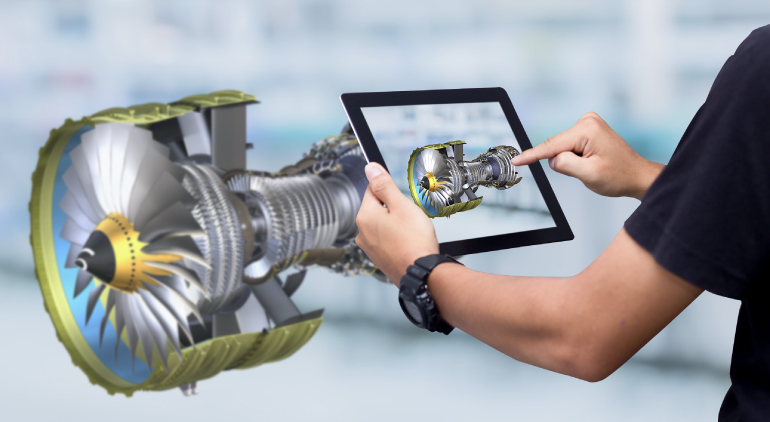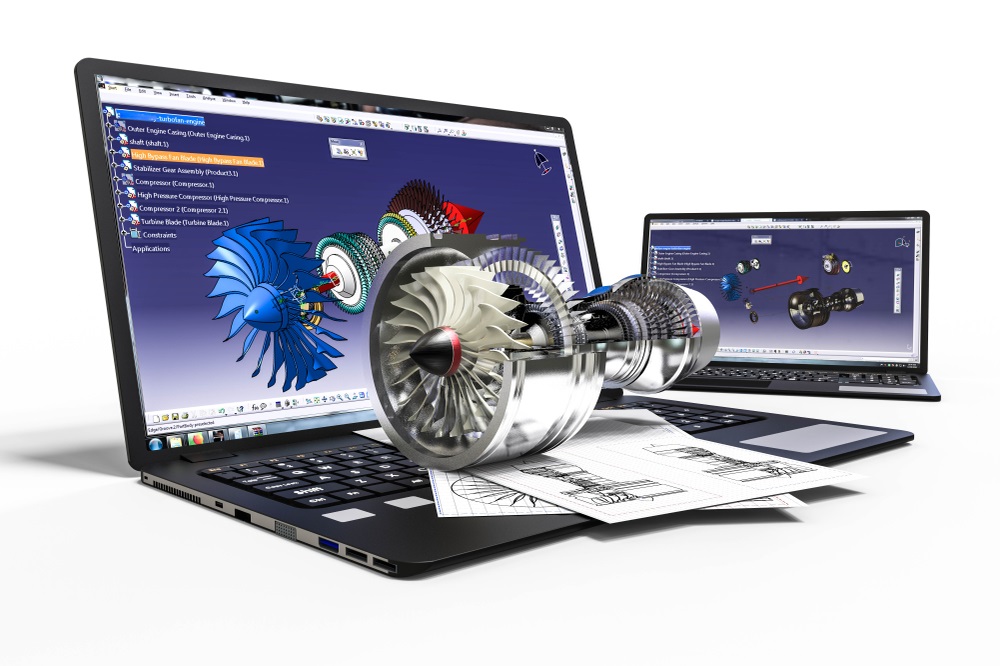10 Ways How Augmented Reality Can Help Engineering Students

Augmented Reality (AR), although only recently stumbling upon popularity, has been up and around for decades from as early as the 1950s. While its close relative, Visual Reality (VR), has taken over the buzz, both of these forms of computer technology have their own differentiated benefits.
VR blocks out the real world in which your physical body resides and throws your mind and brain into a new simulated environment. With VR, one is, for the most part, out of touch with the real physical world at that point of time.
AR, on the other hand, allows the world of simulation to exist in your own reality and environment, thanks to augmented reality engineering.
Hence, with AR you can place a simulated version of your bike in your room but still sense when someone is about to enter your room!
Both AR and VR have revolutionised various industries from simple retail and entertainment industries to more complicated engineering and medical industries.
While both can be used in a multitude of these and unmentioned sectors, the tasks each can carry out are significantly different. Hence, when it comes to engineering, AR emerges as a superior choice.
Engineering of any kind, from electrical to computer, require designing, testing, manufacturing, and running engines. Engineers are builders! The natural question that emerges is:
How can AR possibly help people, or even engineering students, build functional hardware such as engines? The following ten parts will increase your trust in AR tenfold.
1. Positive Rise in Motivation, Interest and Engagement
The conventional method of studying engineering, even with its recent advancements in augmented reality engineering, has branched into equal parts of theory and practical.
However, more often than not, theory is given more importance.
Naturally, reading theoretical concepts and books filled with innumerable mathematical axioms, technological innovations, and physics theories, can become a bit boring.
Introducing AR in engineering education can revolutionise the way of learning completely. Being able to not only imagine but now, visualise and interact with the same theoretical concepts, creates a motivation to learn and be satisfied with the educational process.
A study by Bazarov and team gives an insight on the peak of interest and level of engagement that can be brought about by introducing AR in engineering education.
2. Comprehension AND Retention
“I hear and I forget. I see and I remember. I do and I understand.”
When people began to impart education, it began by the process of an instructor that spoke and a student that heard. When it was realised that this can be enhanced by adding text, people began to read and remember slightly better.
As the years passed and education is still passed down, seeing transformed from texts to mind-maps, diagrams and videos which allowed for better retention.
However, the true reason for education is to understand what you have been instructed to be able to apply it.
With AR, “doing” can be introduced into the system of education. AR technology and VR labs for colleges education can catalyse the comprehension and even memory at a much more efficient and solid way.
3. Computer-Aided Designs (CAD)

CAD, an engineering essential, involves designing, conceptualising, manufacturing, testing, and maintaining objects, before they are built in real life. SOLIDWORKS, Autodesk,
Augment and Web3D are some software options that are made for CAD and have been employed by numerous teaching faculties of engineering students.
CAD allows engineering students to understand objects that they are working on in real time and space and modify it based on the environment.
4. Assembly
Designing a product and then assembling it by using AR engineering technology can help engineering students understand what their products would look like in real life.
But more importantly, by assembling their product bit by bit without as much manual labour, they can do the work themselves and edit what needs fixing by detecting it much faster.
Boeing uses AR glasses by Skylight in order to provide instructions to technicians which leads to a significant amount in saving of time and money.
Similarly, AR glasses can allow engineering students to look at a 3D manual with automated audio instructions to guide them with know-how videos to support the assembly.
5. Training
Training can be carried out by using AR glasses like Google Glass. Amateur engineering students can be trained by professionals who can provide instructional manuals as aforementioned, and this can be further supported by technical diagrams and know-how videos for extreme clarity.
 Get the App from Meta Store: Download Now
Get the App from Meta Store: Download Now
6. Test Runs and Maintenance
Car manufacturing industries like BMW, Ford and Audi have already begun using AR for maintenance procedures through headsets that provide instructions and other procedures.
Many of these companies also allow for customers to go on a test drive through their apps with AR.
7. Academic Performance
An experiment conducted by Shirazi and Behzadan portrays how immersive learning in engineering college through AR can allow for overall better academic performance.
The experiment conducts a test between a control group and a test group, and the latter uses AR tools. The participants of the study ranked the helpfulness of the AR tools very highly showing that along with performance, interest and motivation can also increase through AR.
8. Self-Learning
Through AR, students can teach themselves myriads of processes and practice theoretical information in a simulated product on their own.
To catalyse this process, Gutierrez and his team has even developed an AR application especially for the facilitating information to engineering students.
9. Understanding the Intangible
One of the greatest benefits of AR computer technology is its ability to bring the simulated products and objects into reality.
Engineering students can especially make use of this and understand how their products will work, not only on their computer but in real life.
AR Engineering students can interact with their design and manipulate the amount of space it may require in a different environment.
Even though the simulated version will be intangible, it will be tangible enough to understand how the product in real life would fit into the real world.
10. Quality and Efficiency of Learning
Shirazi and Behzadan’s experiment also explicitly mention how not solely engineering, but STEM education can be positively influenced by AR.
However, when talking about engineering specifically, there is definitely an increase in quality of learning.
The immersive technology in education through AR automatically leads to faster learning, better comprehension and an overall increase in efficiency.
Once listed as above, it can be easily seen that AR is an inevitable step forward for the engineering sector.
This inevitable step of AR in engineering implies that engineering students need to be equipped to handle such technology and if possible, expand its boundaries.
Hence, including AR to engineering education must be just as inevitable a step forward.
.png)
.png)



